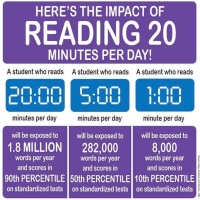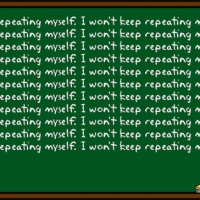spinach-filled brownies

Sneaking Rigor into the Choice-Reading Classroom
Choice is a beautiful thing. With students choosing their own titles in my class, there’s so. much. beauty. There’s beauty in watching Reluctant Readers realize that reading is enjoyable–maybe just not how we‘ve been assigning it. These students become Authentic Readers and grow as a result.
And there’s beauty in the Closet Readers and the Only Read What Is Assigned Readers, as they’re able to read more of what they enjoy while also growing as readers.
But risk comes along for the ride, too.
There’s risk in losing control of what our students are reading. There’s risk in helping our students meet the standards when everyone is reading something different. And there’s risk in our students entering a state of Reading Arrested Development, opting for, say, John Green titles all year long. John Green is an engaging YA author, but if our students don’t eventually challenge themselves with more rigorous texts, too, that’s a college-and-career-readiness problem. The latter is my greatest fear and, thankfully, one that teacher-author Teri Lesesne has already solved. More on that in a minute.
As a teacher, I identify with Jessica Seinfeld (Jerry’s wife), who became a household name for her Deceptively Delicious cookbooks. She hides chickpeas in her cookies, cauliflower in her burgers, and spinach in her brownies. The best part? Her kids don’t suspect a thing, and they are healthier because of it.
Following Jessica Seinfeld’s lead, I feverishly sneak rigor into my choice reading program wherever I can.
There are plenty of ways to do this, but there are three that have proven successful in our classroom: 1) Using Reading Ladders; 2) Teaching whole-class texts when students are ready; and 3) Teaching portions of texts rather than texts in their entirety.
🏋️♀️ READING LADDERS 🏋️♀️
In her book Reading Ladders: Leading Students from Where They Are to Where We’d Like Them to Be, Lesesne introduces the concept of “Reading Ladders.” The goal is for the teacher to “connect students to book after book–each a little more complex than the last.” The graphic below is an example of a Reading Ladder for a mystery/thriller lover. A student might begin with Kate Medina’s Burn Baby Burn and then be guided toward more rigorous texts like Erik Larson’s Devil in the White City and Truman Capote’s In Cold Blood. When they’re ready. The students are still reading because they’re interested in what they’re reading, and they’re becoming stronger readers in the process. Often without even knowing it.
Spinach. Filled. Brownies.

🏋️♀️ STUDENT READINESS 🏋️♀️
Another way I work rigor into the mix is by timing my whole-class reads carefully. I used to open the year with The Great Gatsby before students had completely bought into my For the Love of Reading program. Colossal mistake. The students who Fake-Read the year before did the same thing with me in the fall. (It was, of course, exacerbated when That Kid blurted, “I heard the movie is just like the book!”) While Old Me might have thrown my hands up and said, “Those darn cell phones!,” New Me knows that my students simply weren’t ready to tackle something as rigorous as Fitzgerald. Not yet. Were they capable? Of course. But were they ready? Not a chance. And “[a] book isn’t rigorous if students aren’t reading it” (Penny Kittle in Book Love).
Once I moved The Great Gatsby to the spring, the experience truly became, er, Great. Students were authentically reading a text that had been Fake-Read by all but a handful of students in years past.
And it never hurts to dangle the carrot of watching Baz Luhrmann’s adaptation at the end of the unit. I’ve found that not only are my students more willing to grapple with the text, fewer watch the movie ahead of time, since we‘ll be watching it together in class. Plus, Leo is, like, wicked dreamy.
Spinach. Filled. Brownies.
🏋️♀️ LESS IS MORE 🏋️♀️
Another way I sneak rigor into our curriculum is by following the research-backed approach that Kimberly Hill Campbell shares in her book Less Is More. In it, she writes that
“[her] task as a language arts teacher is to provide texts that are not so difficult that [her] students shut down in frustration and not so easy that [her] students don’t push their thinking.”
To do this, Hill Campbell exposes her students to portions of numerous, challenging texts, rather than reading only a few full-length ones. Accordingly, her students become familiar with far more authors and more writing styles and more genres and more worlds than they would have in reading a few full-length books throughout the year. (Her students read full-length novels, too, of course.)
Her research reveals that less really is more: The students closely read these rigorous texts and remain engaged throughout the entire process–rather than starting out strong, losing interest, and then phoning it in for the remainder of the unit. If a particular text doesn’t appeal to them, students know that if they can just hang on, another one is coming in a matter of days. Contrast that with a student spending a month (or more with vacations?) discussing, assessing, and writing about a book that doesn’t appeal to them. My students used to either Fake-Read (throwing “American Dream” into the conversation here and there) or disengage altogether. And were even upfront about it: “Ms. Hughes, I hate this book, but I promise I’ll try to read the next one.”
So, here’s an example of how I followed Hill Campbell’s lead.
Our final sophomore unit centers around society’s thirst for more. And what character is a more power-hungry, insatiable glutton than Macbeth? However, rather than read Macbeth in its entirety (which is done in some of our senior-level classrooms), I was given permission to explore just one act.
Rather than spend five weeks on a Shakespearean play, we explored a portion of Macbeth together and then students examined a scene (of their choosing) from another Shakespearean play, as well as teach it to small groups of classmates.
Like all books—especially ones we explore in part, context is critical. We first discussed Shakespeare’s unique language (to prevent any roadblocks), and then we discussed some background (to provide a context).
After our whole-class exploration, the training wheels came off. Students became experts in a scene (of their choice) from one of Shakespeare’s 36 other plays and taught it to a small group.
And the best part? My students remained engaged throughout the entire unit. Of Shakespeare. (In fact, many of them circled back to read the rest of Macbeth and their self-selected plays on their own.)
Spinach. Filled. Brownies.
We are currently in COVID, which prevented me from doing that again this spring; however, I’m excited to try this with many more grade-level texts in the fall.
(As soon as we figure out what school in the fall will look like.)




If only you were our new coordinator. I have heard wonderful, hopeful things & have everything crossed, but how awesome would it be to have your way be our norm? I’m stuck doing the P now S word to start the year, and I am devastated. I also won’t have my own classroom, so my beautiful free choice books aren’t accessible. #sobbing
LikeLiked by 1 person
I’m trying not to sob reading your comment. Every. Word. Depresses. Me. Thank you for partnering with me on this journey!
LikeLike